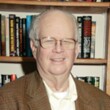The canary trainer: from the memoirs of John H. Watson
Description
More Details
9780307702470
Similar Series From Novelist
Similar Titles From NoveList
Similar Authors From NoveList
Published Reviews
Booklist Review
The connection between these two entertaining new novels is none other than the beloved Sherlock Holmes, or, in the case of The List of 7, his creator, Arthur Conan Doyle.Mark Frost's claim to fame has been as a writer for "Hill Street Blues" and "Twin Peaks." This is his fictional debut, and it's a knockout. Doyle, a young doctor with a lively and critical interest in the occult, attends a seance that ends in murder. He flees the scene, pursued by a gang of hooded zombies, and is rescued by a remarkable man named Jack Sparks. Adept at various arcane martial arts and head of a loyal contingent of reformed but still resourceful crooks, Sparks is engaged in a strange and terrifying battle with the forces of evil. His archenemy is none other than his brother, the vilest possible villain. Doyle soon finds himself confronting one supernatural horror after another, from giant leeches to marauding mummies. This is an engrossing cosmic thriller featuring delectably nonchalant and erudite heroes.Meyer has taken a far more traditional approach to Holme~sian lore. His new Holmes novel follows the memorably successful format of his best-selling The Seven-Per-Cent Solution (1974). This one begins with the discovery of a forgotten manuscript written by the esteemed Dr. Watson. The document proves to be an account of one of Holmes' adventures during the "so-called Lost Years" of 1891-94, the period directly following the erroneous report of his death. Holmes had taken advantage of his alleged demise by traveling to Paris and assuming the identity of one Henrik Sigerson, a Norwegian violinist. While few were convinced of his Nordic blood, none could dispute his credentials as a violinist, which earned him a position in the orchestra of the Paris Opera. Just as he was getting comfortable in his new career, he was forced to return to sleuthing. The opera house turned out to be an immense labyrinth of secret passageways and chambers, the domain of a music-mad ghost. Sound familiar? Yes, this is a clever takeoff on The Phantom of the Opera. The "canary" is a beautiful and virginal young singer; her "trainer" is none other than the possessive ghost. Holmes has a devil of a time solving this case incognito, let alone without the aid of his trusty colleague Watson, but his deductive gifts and courage save the day, and Holmes fans will sigh with contentment. ~--Donna Seaman
Publisher's Weekly Review
The third of the versatile Meyer's canny Conan Doyle pastiches (following the bestselling Seven-Per-Cent Solution and The West End Horror ) takes Sherlock Holmes into new and fanciful terrain with an elaborate romp that embroils him with Gaston Leroux's Phantom of the Opera. Moonlighting incognito as a violinist with the Paris Opera, Holmes again encounters American singer Irene Adler, the only woman who ever outwitted him. She enlists his aid to protect a young soprano from the mysterious and increasingly macabre shenanigans around her--and the game's afoot. Purists may balk at Meyer's rather voluble, emotional Sherlock, but adepts and novices alike will relish the author's adroit mimicry of the narrative conventions of Victorian melodrama and his eye for period detail, including his trademark conceit of slipping historical figures--here Degas, Freud and Leroux himself, among others--into the margins of his tale. Doyle's austere detective sometimes seems a little at sea amidst the florid atmospherics of fin de siecle Paris, and Meyer's casual plotting (piggybacking on the over-familiar Phantom outline) sinks on occasion into travelogue and affords Holmes little opportunity to flex his deductive muscles. But overall, Meyer treats his readers to a lively and entertaining, if undemanding ride. 50,000 first printing; major ad/promo. (Sept.) (c) Copyright PWxyz, LLC. All rights reserved
Kirkus Book Review
Fresh (or stale) from his encounters with Freud (The Seven-Per- Cent Solution, 1974) and Jack the Ripper (The West End Horror, 1976), Sherlock Holmes comes up against the Phantom of the Opera, with mixed results. Disguised as a Norwegian violinist who replaces a performer at the Paris Opera who's been frightened off by the Phantom, Holmes is blackmailed by the woman, Irene Adler, into contracting to protect soprano Christine Daaé (who's so innocent that she believes the mysterious singing master who calls himself ``Nobody'' is the Angel of Music) from her ghostly patron. At first the Phantom seems intent on terrorizing everyone but La Daaé: her replacement as Faust's Marguerite, the oblivious incoming directors, even the new woman who tends the Grand Tier left boxes. No sooner has Holmes guessed at the Phantom's identity, though, than he spirits La Daaé off to the cavernous Opera basement for the requisite--and anticlimactic--finale. Should appeal to those fans (and there will be plenty) who can overlook the undistinguished stylistic pastiche--Holmes rather unwisely narrates this lost adventure himself--the footnotes that explain every last Holmesian reference, and the unfortunate poverty of the plot. (First printing of 50,000)
Publishers Weekly Reviews
Meyer's third novel based on Sherlock Holmes finds the celebrated sleuth entangled in mysterious events involving the Phantom of the Opera. (Mar.) Copyright 1995 Cahners Business Information.
Publishers Weekly Reviews
The third of the versatile Meyer's canny Conan Doyle pastiches (following the bestselling Seven-Per-Cent Solution and The West End Horror ) takes Sherlock Holmes into new and fanciful terrain with an elaborate romp that embroils him with Gaston Leroux's Phantom of the Opera. Moonlighting incognito as a violinist with the Paris Opera, Holmes again encounters American singer Irene Adler, the only woman who ever outwitted him. She enlists his aid to protect a young soprano from the mysterious and increasingly macabre shenanigans around her--and the game's afoot. Purists may balk at Meyer's rather voluble, emotional Sherlock, but adepts and novices alike will relish the author's adroit mimicry of the narrative conventions of Victorian melodrama and his eye for period detail, including his trademark conceit of slipping historical figures--here Degas, Freud and Leroux himself, among others--into the margins of his tale. Doyle's austere detective sometimes seems a little at sea amidst the florid atmospherics of fin de siecle Paris, and Meyer's casual plotting (piggybacking on the over-familiar Phantom outline) sinks on occasion into travelogue and affords Holmes little opportunity to flex his deductive muscles. But overall, Meyer treats his readers to a lively and entertaining, if undemanding ride. 50,000 first printing; major ad/promo. (Sept.) Copyright 1993 Cahners Business Information.





























